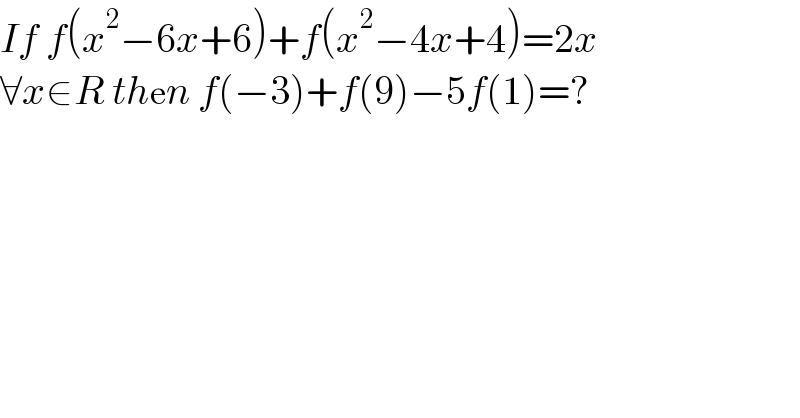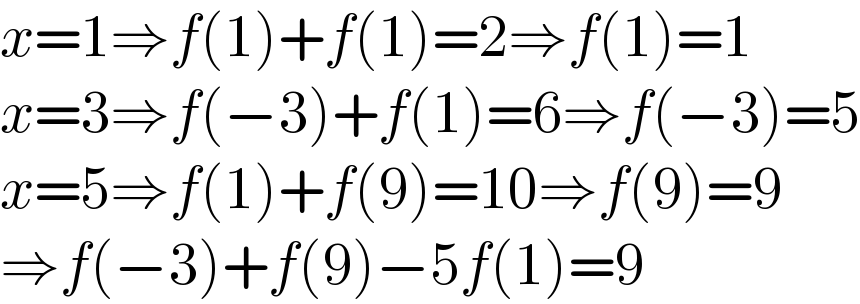Question Number 143987 by liberty last updated on 20/Jun/21

$${If}\:{f}\left({x}^{\mathrm{2}} −\mathrm{6}{x}+\mathrm{6}\right)+{f}\left({x}^{\mathrm{2}} −\mathrm{4}{x}+\mathrm{4}\right)=\mathrm{2}{x} \\ $$$$\forall{x}\in{R}\:{th}\mathrm{e}{n}\:{f}\left(−\mathrm{3}\right)+{f}\left(\mathrm{9}\right)−\mathrm{5}{f}\left(\mathrm{1}\right)=? \\ $$
Answered by mitica last updated on 20/Jun/21

$${x}=\mathrm{1}\Rightarrow{f}\left(\mathrm{1}\right)+{f}\left(\mathrm{1}\right)=\mathrm{2}\Rightarrow{f}\left(\mathrm{1}\right)=\mathrm{1} \\ $$$${x}=\mathrm{3}\Rightarrow{f}\left(−\mathrm{3}\right)+{f}\left(\mathrm{1}\right)=\mathrm{6}\Rightarrow{f}\left(−\mathrm{3}\right)=\mathrm{5} \\ $$$${x}=\mathrm{5}\Rightarrow{f}\left(\mathrm{1}\right)+{f}\left(\mathrm{9}\right)=\mathrm{10}\Rightarrow{f}\left(\mathrm{9}\right)=\mathrm{9} \\ $$$$\Rightarrow{f}\left(−\mathrm{3}\right)+{f}\left(\mathrm{9}\right)−\mathrm{5}{f}\left(\mathrm{1}\right)=\mathrm{9} \\ $$
